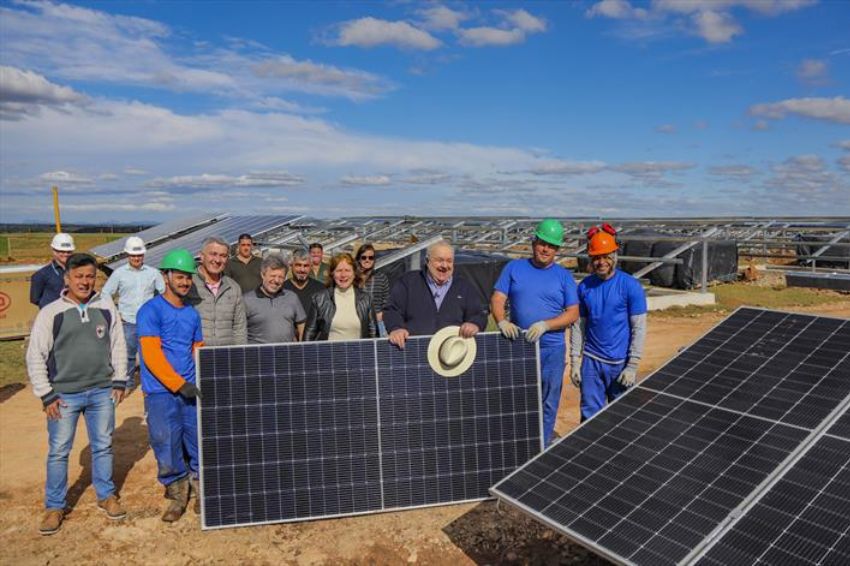Mayor Rafael Greca visited the panel installation work at the Solar Pyramid of Caximba. Photo: Daniel Castellano/SMCS
Curitiba City Hall (PR) has started the installation of PV modules for the factory The Solar Pyramid of CaximbaIt is located in the old municipal sanitary landfill, which was disabled in 2010.
Eighty bases for receiving metal tables and panels have already been completed, with 168 panels installed. In total, there will be 614 bases, with 14 modules in each.
All of the more than 8,000 solar panels are expected to be installed in about three months. According to the municipal administration, the pace depends on the rainfall regime that was frequent in the area.
“Our city will never be the same, it will increasingly be powered by solar energy,” Greca said. “The whole of Brazil needs to stick to this trend,” Mayor Rafael Greca emphasized during a business inspection last week.
according to Marielsa do Carmo Oliveira Diasmunicipal secretary environmentThe plant has a production capacity of 4.55 megawatts. “This is the first large-scale project in this region to be built in a sanitary landfill in Latin America,” he commented.

Also according to the environment minister, the initiative has a positive impact on two main issues. “Through this project, we have shifted environmental responsibility into a renewable energy plant. However, we are encouraging residents to look for less polluting energy sources,” Marelsa highlighted.
The Solar Pyramid of Caximba
The Foundation integrates a range of program initiatives Curitiba More Energy It aims to combat and mitigate climate change. The program includes the installation of panels at Palácio 29 de Março, in the Hall of Acts in Parque Barigui and in the Galeria das Quatro Estações, in the Botanical Garden.
The project is a collaboration of C40 . Cities Climate Leadership Group and gives Deutsche Gesellschaft für Internationale Zusammenarbeit (GIZ) GmbHWhich supports cities in developing projects to reduce greenhouse gas emissions and stop rising global temperatures.
The program is funded by the German Federal Ministry for Economic Development and Cooperation (BMZ), the UK Department for Business, Energy and Industrial Strategy (BEIS) and the US Agency for International Development (USAID).
More PV projects
The next phase of Curitiba Mais Energia includes bidding for three other PV systems on the rooftops of Santa Candida (465 kW), Boquerao (512 kW) and Pinerino (925 kW) bus stations. Bidding is in the final stage, with corporate qualification analysis.

“Writer. Analyst. Avid travel maven. Devoted twitter guru. Unapologetic pop culture expert. General zombie enthusiast.”

